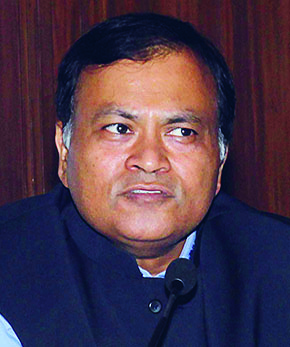 Kishore Kumar Biswas
Kishore Kumar Biswas
Recently, ASSOCHAM India published its “Action Plan for the New Government of West Bengal”. The Plan hopes to create one crore jobs and attracting ` 10 lakh crore investment in the next five years in the state provided a lot of measures are taken by the government. Sunil Kanoria, President, ASSOCHAM, expressed his satisfaction about the potential strength of economic development of the state. He cited the state’s intellectual prowess, availability of engineers, chartered accountants, legal professionals, doctors, etc. He also hoped that the present state of ‘brain drain’ from the state can be converted into ‘brain gain’ leading it to become a knowledge-based service industry hub with the establishment a greater number of institutions for research.
In ‘The Sustainable Action Plan’ to achieve double digit growth of GDP of the state, a lot of recommendations have been made. The first is on good governance. In this area, focus needs to be on social justice, timely delivery, implementation of scheme, rule of law, transparency, policy reform, eradication of corruption, protection of RTI activities, independent and disciplined police force, safety and security of women in work place, encouragement of CSR programme, implementation of Lokpal Bill, and police reform.
Second is the focus on employment. Creation of employment opportunity, ensuring credit to unorganized sector, reforms of labour laws have been recommended to enhance employment generation.
There are recommendations on various sectors like agriculture and allied sector, industry, service sector, infrastructure such as, road, telecom, power, and health. The ASSOCHAM has also recommended special economic zones. As the rural population is huge, the organization highlighted the need for rural development.
The economy of West Bengal
The main challenge of the state is speeding up industrial development. It is known that the industrial policy of the former Left Front government did not succeed and its industrial activism was one of the main factors behind the fall of that government. Then the attitude of the Mamata Banerjee government towards industrial sector was not congenial for industrial development. So, factors like governmental attitude and the global economic scenario are against industry at present. The plight of Andal Airportcan be an important study as to why industrial development is not an easy task in West Bengal.
In the recent Budget speech, Amit Mitra, finance minister of the state, said that loans to small-scale industries in West Bengal is the highest in India. This type of statement hides more than it reveals. The first thing is what the base year is. Is the statement considering the absolute figure on loan? Does it consider the growth rate of loan? But statistics show that the absolute figure of loan to small scale industry is higher in Tamil Nadu, Karnataka, and some other states. The figure of loan in Maharashtra is much higher. But its figure is under small and medium industry. So the case of Maharashtra is not comparable. But the statement of Mitra is not merely confusing. A section of observers think statistical jugglery is not uncommon in the state. The statistics like on the revenue collection on compounded annual growth rate (CAGR) basis have been shown as over 22% during 2011-15. This has been contradicted by a section of observers. The confusion arises regarding the definition of revenue collection. Does it consider central government share also? Does it consider both tax and non-tax revenue? Studies show that the average growth rate of its own tax collection in that five-year period of the state has been a little over 15.5% . It is true that the state has been able to maintain fiscal consolidation but it is mainly at the cost of unpaid dearness allowances of the state and state-aided employees and pension holders, which would require additional funds of about ` 15,000 crore per year.
The TMC government seems to suffer from short-sightedness in its political aspiration. The administration is focused on centralization. This may bring forth some positive results in the short-run but in the long run, it may be harmful for the state politics.
Conclusion
A lot of recommendations of the ASSOCHAM are favourable for the development of the state. But how far the state government is ready or able to accept them only time can tell.
Add new comment